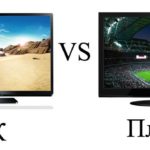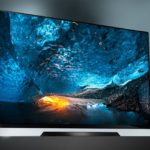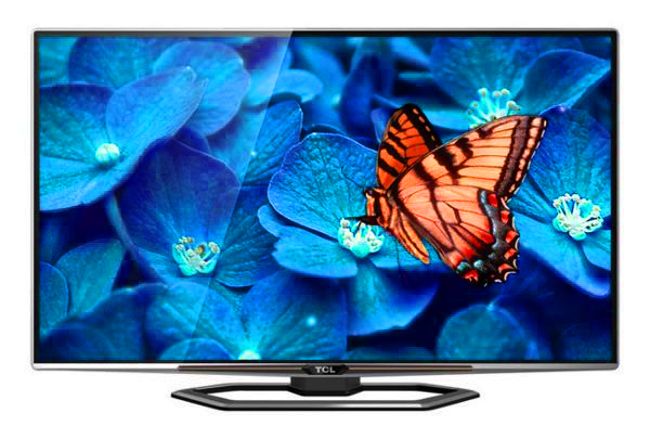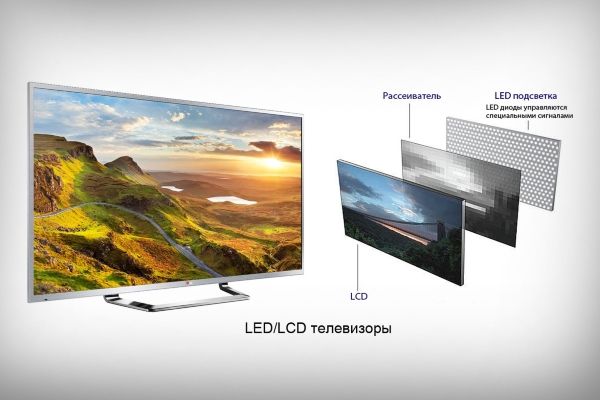TV or computer monitor, which is better?
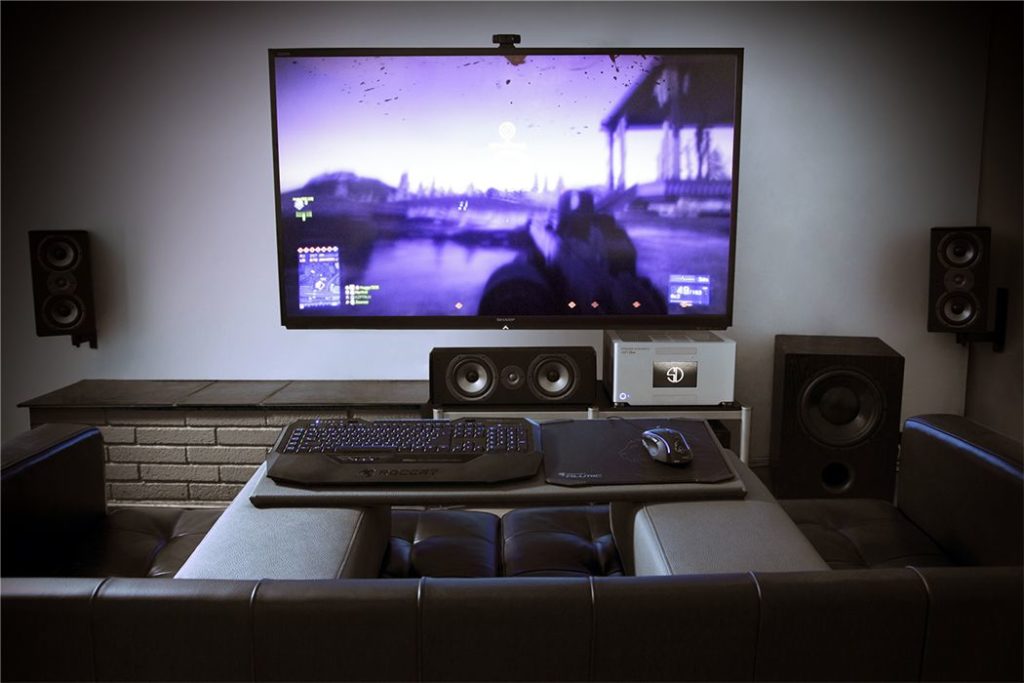 When purchasing a new PC screen, many users may wonder what is better: a computer monitor or a TV. In modern realities, it is difficult for an inexperienced buyer to understand the difference between a TV device and a monitor. Although ten years ago the difference was obvious to anyone. After all, at that time large TVs were often plasma or LSD and had HD quality. And their competitors of the same price could already boast of a FullHD picture, adhering to the same technologies.
When purchasing a new PC screen, many users may wonder what is better: a computer monitor or a TV. In modern realities, it is difficult for an inexperienced buyer to understand the difference between a TV device and a monitor. Although ten years ago the difference was obvious to anyone. After all, at that time large TVs were often plasma or LSD and had HD quality. And their competitors of the same price could already boast of a FullHD picture, adhering to the same technologies.
The differences also concerned sizes. At that time, TV models with a wide diagonal were already being produced, and PC screens were just mastering such sizes. Today, the differences between them are not so radical and come down to many subtleties that are not always clear and obvious to ordinary users. Both devices are based on an LSD or OLED matrix, have different sizes, from very small to huge, and the connectivity and number of ports are reduced to a common standard. This is why the line between a TV and a monitor is currently blurred, but in this article we will look at all the differences between the two devices, and also compare their pros and cons when interacting with a personal computer.
The content of the article
Fundamental differences between a monitor and a TV
It’s worth starting with a screen characteristic that is clear to everyone, namely, size.TVs boast models with a diagonal of up to 100”, while monitors rarely have a maximum size exceeding 35”. In both cases, there are models using different technologies, both expensive and cheap.
To interact with a computer, using a screen with a diagonal of more than 35” is not entirely convenient, due to the fairly close distance from the eyes. However, there are also smaller TV models. The size of some TV models ranges from 25-35”. These dimensions allow you to safely use the TV instead of a computer monitor without feeling discomfort. TVs, like their competitors, come in a variety of resolutions from regular HD to the latest 4k UHD.
An undeniable advantage of a monitor in front of a TV is the variation in aspect ratios. To perform various tasks, there are 21:9 screens, which have no analogues in the world of televisions, since the standard aspect ratio for TV is 16:9
Reference! Not long ago, screens with 8k UHD technology went on sale, which have the highest resolution available at the moment.
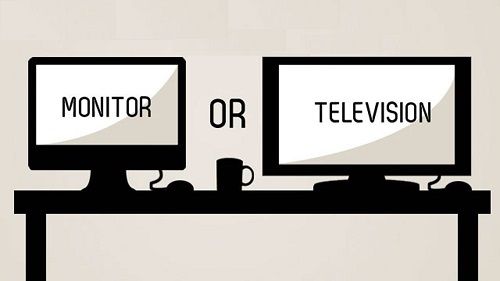 For a more in-depth analysis, let's look at some of the technical characteristics of these devices. Let's start with the matrix. At the moment, both TVs and monitors are produced using similar technologies, especially those models that provide high picture quality and color reproduction. However, in the lower price segment, monitors outperform TVs, since it is much easier to find a 20-25” FullHD monitor than a similar TV.
For a more in-depth analysis, let's look at some of the technical characteristics of these devices. Let's start with the matrix. At the moment, both TVs and monitors are produced using similar technologies, especially those models that provide high picture quality and color reproduction. However, in the lower price segment, monitors outperform TVs, since it is much easier to find a 20-25” FullHD monitor than a similar TV.
Ports. To connect a monitor and TV, standard connectors such as VGA, HDMI, USB, etc. are usually used.However, the TV is in an advantageous position here, as it has greater switching capabilities thanks to a huge number of different inputs and outputs. Also in favor of the TV is the possible presence of a tuner and antenna, as well as such unique functions as support for CI cards, which puts this device in a more advantageous position.
Among other things, some TV screens may have outdated inputs, such as “tulips”, etc., which makes the use of TV more universal. Also, an undoubted advantage will be the presence of ports, because even budget models of regular HDMI TVs can have more than three. In this regard, the PC display is inferior to its competitor in terms of multifunctionality.
After the analysis and comparison of the technical component is completed, you can begin a comparison based on functionality, namely the comfort of using devices for certain purposes.
Which is better for gaming?
It is generally accepted that monitors have a lower delay between pressing buttons and displaying an image on the screen (input lag). Also, many TVs allegedly suffer from flickering pictures. Both facts are not entirely true. Such problems occur only on the cheapest models of TV devices. As well as uneven illumination, all this is a problem with outdated devices.
 These problems do not apply to modern models of a decent price segment. However, TVs have another parameter in which they are inferior to their competitors. This parameter is the frame rate, and this is the key difference between these two devices. After all, the number of displayed frames plays a key role for a comfortable game.
These problems do not apply to modern models of a decent price segment. However, TVs have another parameter in which they are inferior to their competitors. This parameter is the frame rate, and this is the key difference between these two devices. After all, the number of displayed frames plays a key role for a comfortable game.
Important! Do not confuse the frequency discussed in this article with FPS; these are different parameters and FPS does not depend on the selected screen.
Typically, TVs even with a 120Hz matrix are capable of receiving only 60Hz of the input image, and “finish” everything else on their own. This option does not affect watching movies or sports in any way, but it can ruin the experience while gaming. Due to this frequency, artifacts may appear and the input lag time may increase. An exception here may be 4k TV from Sony, however, even here we are not completely sure that there will be no problems. From all of the above, a simple conclusion follows: for good and high-quality gaming, monitors are much better suited than TVs.
When working with media files such as images or videos, color reproduction is very important. Not all monitors can boast a rich color palette (if we consider the budget segment). In this comparison, TVs have much more color reproduction and do not tend to distort the color character, which is not the case with some monitors. Color distortion is a real problem, especially for low-end displays. That is why, for working with photos or videos, when performing color correction or image processing, a TV is much better suited than a PC monitor.
What are the advantages of both options?
So, thanks to the analysis of the parameters and characteristics of both devices, it was possible to find out the main advantages of monitors and TV devices. Let us summarize the above material.
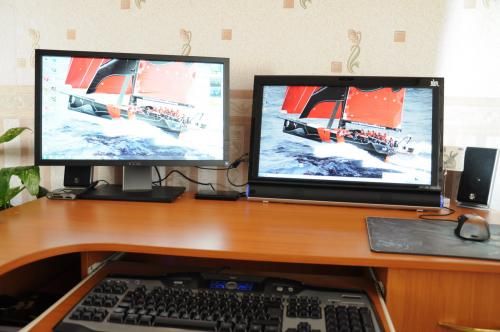
The main advantage of TVs is their size. It is very difficult to find a monitor with a diagonal larger than 35”. However, for a TV device this is quite an average size.In addition, watching videos and movies becomes more comfortable on a large screen measuring 40” or more. Another undoubted advantage of TVs is color reproduction. Here we are talking, again, only for the low price category, since premium devices have a rich palette and a bright range of colors.
A higher and more stable frame rate can be an undoubted advantage for monitors. This is undoubtedly important for professional gamers, for whom the delay can be fatal. Monitors also benefit in terms of price/quality ratio in the low price segment. It is much easier to find a high-quality and inexpensive monitor for a PC than a TV. For the same price, a TV device will most likely be inferior in parameters to its competitor. However, this is only true in the category up to $200. TVs and monitors with a higher price tag have more similar parameters.
It is very difficult to draw an unambiguous conclusion, because these two devices have both undoubted advantages and disadvantages. In order to make a decision on the final choice, the user needs to decide for what purpose the personal computer screen will be used. If the main purpose of the PC is to launch and support games, then the choice should be a computer monitor. If you need a screen for working on graphics or editing images, using a TV is a clear favorite.


